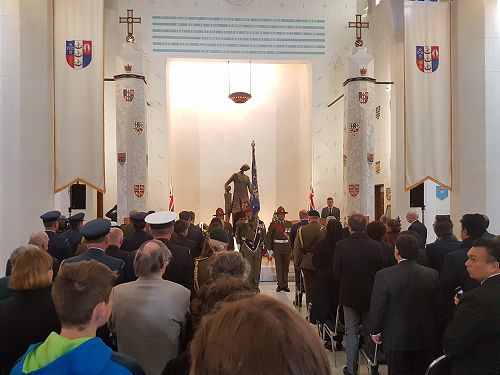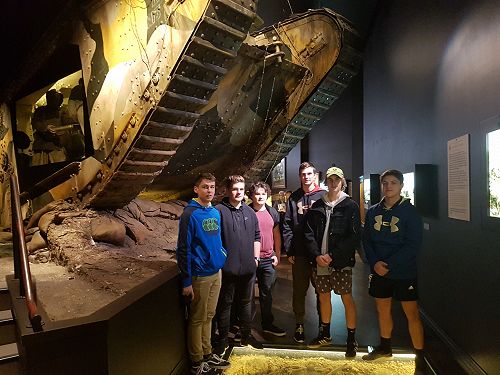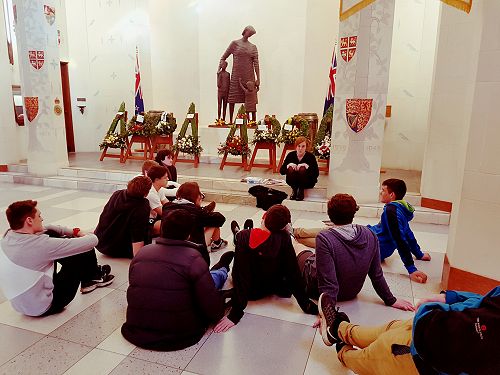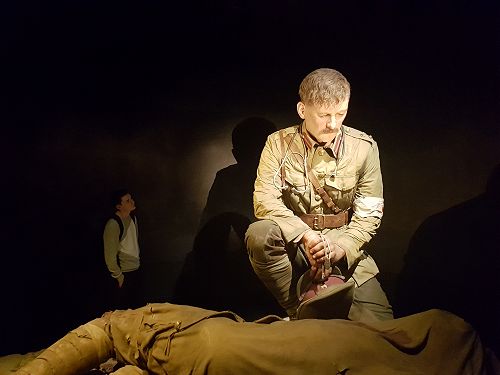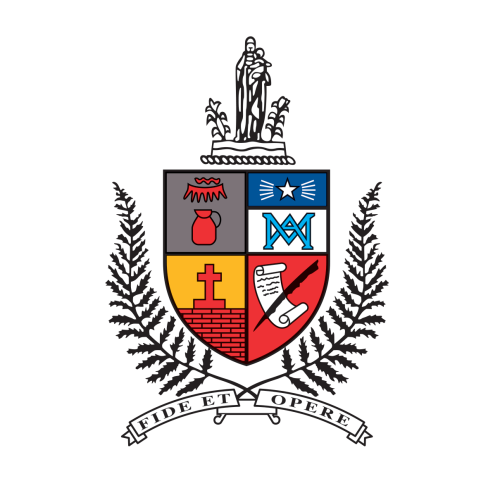
Social Sciences Faulty Update
Year 13 History Trip to Wellington
In support of recent learning, on Wednesday, Year 13 historians flew up to Wellington for a day of First World War learning. The day consisted of an exploration of the fantastic Great War Exhibition, which was created by Sir Peter Jackson. This exhibition expertly tells the story of the Great War in living colour. Every image seen in the exhibit has been colourised by Weta Digital, needless to say it is visually spectacular. Much of the artefacts on display are from Sir Peter’s private collection. The Exhibition is set within Wellington’s Pukeahu National Memorial Park, in the shadow of the National War Memorial and the Tomb of the Unknown Soldier. These features, as well as the Exhibition itself, were well presented and explained by the very helpful Ashley and Andy who work in educating students about these features.
The students were also fortunate to take part in a significant national centenary underneath the Memorial in the Hall of Memories. June 7th 2017 was precisely 100 years on from the Battle of Messines Ridge in Belgium. Huge mines were created and then explosives were then laid and detonated underneath the ridge. This instantly vaporised 10’000 Germans. The explosions could be heard 360km away in London! This was a significant, and rarely successful, offensive for the Allies, but also set the way open for the disastrous Battle of Passchendaele later. At the centenary a number of foreign dignitaries were present including Minister of Heritage David Bennett and the Belgian Ambassador in Australia. Though perhaps underdressed, this was a great experience for the senior historians as they consider the significance of the war 100 years on.
Before leaving the Exhibition we had the fortune to have a presentation from Steve Watters. Steve is an historian for the Ministry of Culture and Heritage as a well as a key author for the online website NZHistory.net. Steve did a fantastic job of challenging the students to consider aspects such as “they died for our freedom” and the overall nature of our commemoration. As opposed to a lecture, Steve basically used the hour to ask a series of questions to the young historians, chiding them to consider the implications of the war today and to challenge the status quo.
The final stop on the way back to the airport was a visit to the larger than life ‘Gallipoli: The Scale of Our War’ exhibit at Te Papa Museum. This exhibition was also created largely by Weta Workshops and consists of massive life-like models of certain NZ’ders involved in the Gallipoli Campaign along with their own personal stories. Rather than focusing on the entire Western Front this has a specific focus on the Gallipoli Campaign. It is equally as impressive visually as the Great War Exhibition just a short walk away.
Overall, this was a day of exuberant learning and may have been a case for sensory overload. Hands on learning, outside of the classroom, is always desirable where possible, and this full on day trip was no exception. Students current knowledge, understanding and ability to question aspects around the ‘War to end all wars’ has been finely enhanced by this experience.
Mr Callum Wilson (TIC History and Social Studies)
Gallery
